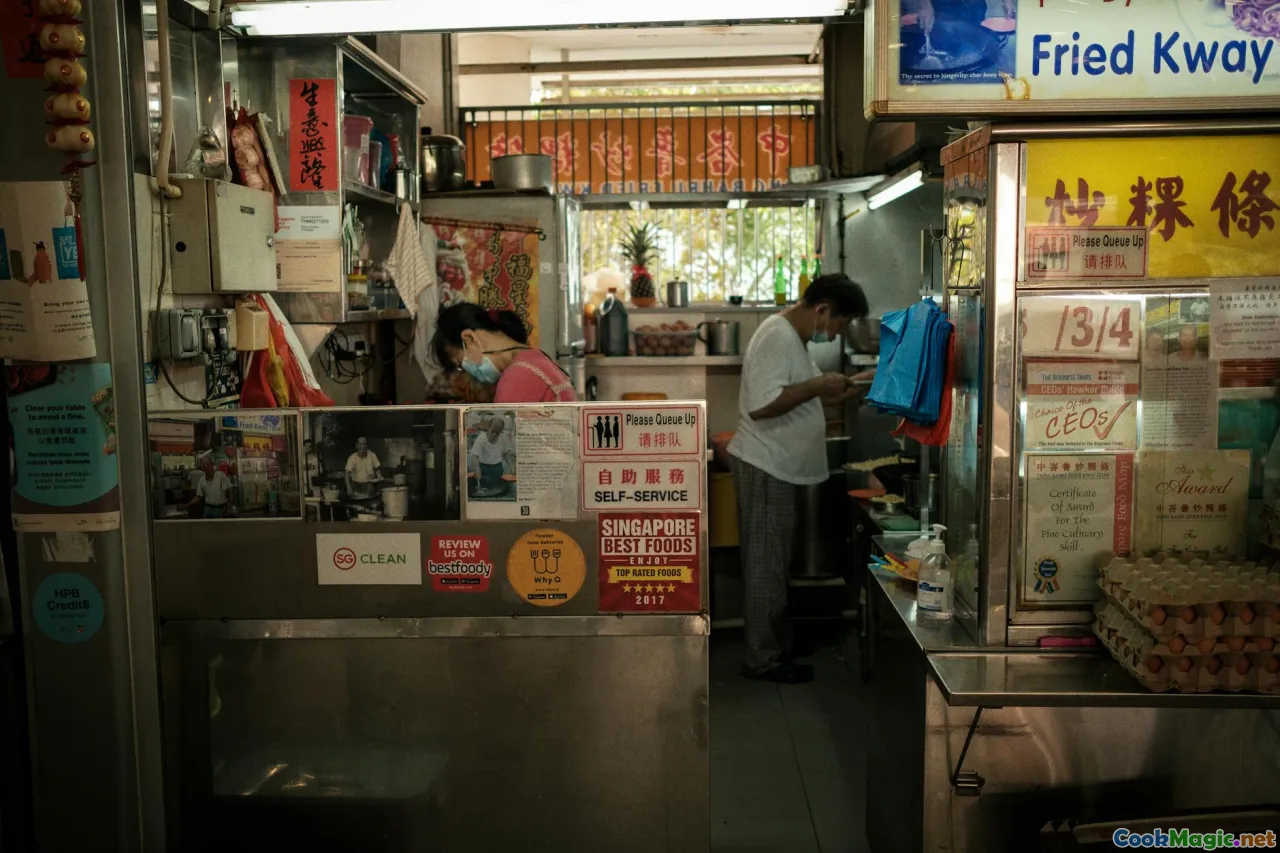Flavors of Singapore Hawker Culture
8 min read Discover the vibrant and diverse flavors of Singapore's iconic hawker culture, blending history, tradition, and sensory delight in every bite. May 12, 2025 15:00
Flavors of Singapore Hawker Culture
Imagine a bustling street corner at dawn, the air thick with the intoxicating aroma of sizzling spices, fragrant broths, and roasted meats. This is the heartbeat of Singapore’s hawker culture—a living, breathing tapestry of culinary traditions that embody the city-state’s multicultural soul. For many locals and eager travelers alike, hawker centers are more than just food courts; they are sacred grounds where history, community, and flavor converge.
A Rich Tapestry Woven Through History
Singapore’s hawker culture is a reflection of its diverse demographic fabric—Chinese, Malay, Indian, Peranakan, and beyond. Its roots can be traced back to the 19th century, when immigrant communities established roadside stalls as a means of livelihood. Over time, these humble beginnings evolved into organized hawker centers, preserving traditional recipes while adapting to modern tastes.
During the colonial era, hawker stalls became vital to daily life, offering affordable, hearty meals to workers, traders, and families. The government recognized their importance in social cohesion and culinary preservation, leading to the development of designated hawker centers in the 1970s. Today, these centers are UNESCO-recognized intangible cultural heritage sites, safeguarding Singapore’s culinary legacy.
Sensory Journeys: The Flavors and Aromas
Walking into a hawker center in Singapore is akin to stepping into a culinary carnival. The sights are a riot of colors: steaming bowls of laksa with vibrant red chili oil, skewers of satay glistening with peanut sauce, and golden-hued roti prata crispy from the griddle.
The Iconic Dishes
- Hainanese Chicken Rice: Often dubbed Singapore’s national dish, tender poached chicken rests atop fragrant jasmine rice infused with chicken stock and pandan leaves. The accompanying chili sauce, ginger paste, and soy-based dark sauce create a symphony of flavors—savory, spicy, and aromatic.
- Chilli Crab: A messy, delightful affair—crab smothered in a tangy, sweet-spicy tomato-based sauce served with mantou buns. The sauce’s thick, glossy texture coats your palate, leaving a lingering zest.
- Laksa: A bowl of spicy noodle soup with a rich coconut milk broth, topped with prawns, tofu puffs, and fresh herbs. The blend of heat, creaminess, and umami is invigorating.
- Satay: Skewers of marinated meat grilled over charcoal until smoky and caramelized, served with a thick peanut sauce and cooling cucumber slices.
- Kaya Toast and Kopi: A breakfast staple—sweet coconut egg jam spread on toasted bread, paired with local kopi (coffee) brewed strong and sweetened with condensed milk.
The Textures and Tastes
Every bite offers a sensory adventure. The crispy skin of a freshly made roti prata, the succulent tenderness of char siu pork, the chewy bite of hand-pulled noodles, and the aromatic spices that dance across the palate—all these elements make Singaporean hawker food an immersive experience.
The Social and Cultural Heartbeat
Hawker centers are more than culinary landmarks; they are social hubs where generations gather, stories are shared, and community bonds are strengthened. It’s common to see families enjoying breakfast together, friends catching up over a bowl of bak kut teh, or seniors reminiscing over nostalgic dishes.
Personal anecdotes reveal how hawker food connects individuals to their roots. For many Singaporeans, a bowl of prawn mee or a plate of char kway teow is a taste of childhood—evoking memories of bustling family dinners or late-night suppers.
The Art of Hawker Cooking
Behind each stall is a craftsman—hawkers who have honed their skills over decades, often passing recipes through generations. Their mastery lies in balancing flavors, controlling heat, and timing ingredients perfectly.
Take, for instance, the meticulous process of making Hainanese chicken rice: the chicken must be poached at just the right temperature to stay tender, the rice fried in chicken fat and garlic to achieve the perfect fluffiness, and the chili sauce blended to a precise tang and spice level. It’s dedication that elevates simple ingredients into an extraordinary dish.
Challenges and Preservation
Despite their cultural significance, hawker centers face modern threats—urban development, rising operation costs, and changing consumer habits. Recognizing their importance, Singapore has taken active steps to preserve this culinary heritage, including training programs, grants for hawkers, and initiatives promoting food innovation.
Efforts are also underway to modernize presentation without compromising authenticity. Innovative chefs are experimenting with traditional recipes, creating contemporary takes that respect tradition while appealing to new generations.
Personal Reflections and the Future
For me, exploring Singapore’s hawker culture is akin to uncovering a living museum—each stall telling a story of migration, resilience, and community. The communal tables, the shared plates, the clatter of chopsticks and spoons—all embody the Singaporean spirit.
As the city evolves, so too does its street food scene. Yet, the essence remains rooted in the flavors, techniques, and stories that have been passed down through decades. It’s a testament to the enduring power of food as a cultural anchor.
In Conclusion
Singapore’s hawker culture is a vibrant mosaic of taste, tradition, and community spirit. It invites us not only to indulge in its remarkable flavors but also to appreciate the stories and histories embedded in every dish. Whether you’re a seasoned foodie or a curious traveler, a visit to Singapore’s hawker centers promises a delightful, immersive experience—one that celebrates the city’s rich, multicultural identity through the universal language of food.
Come hungry, and leave inspired—Singapore’s hawker culture is a feast for all the senses, a true testament to the city’s soul.









